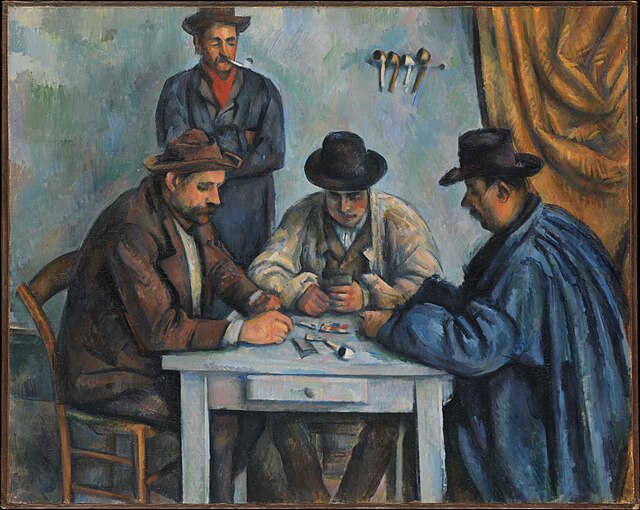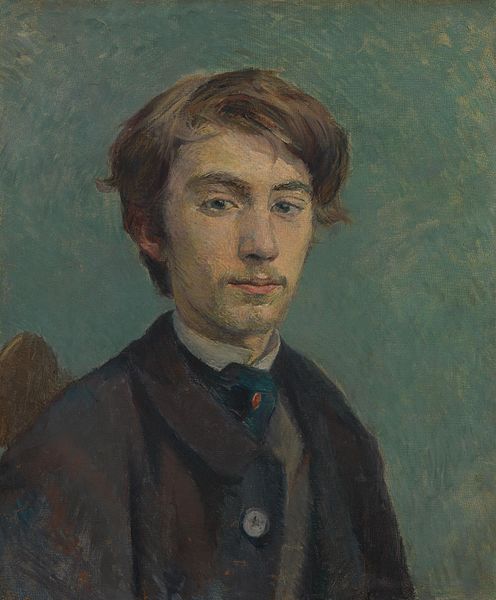Eugène Henri Paul Gauguin was a French painter, sculptor, printmaker, ceramist, and writer, whose work has been primarily associated with the Post-Impressionist and Symbolist movements. He was also an influential practitioner of wood engraving and woodcuts as art forms. While only moderately successful during his lifetime, Gauguin has since been recognized for his experimental use of color and Synthetist style that were distinct from Impressionism.
Aline Marie Chazal Tristán, (1825–1867) "The Artist's Mother", 1889, Staatsgalerie Stuttgart
Gauguin's maternal grandmother, Flora Tristan (1803–1844) in 1838
Gauguin with his wife Mette in Copenhagen, Denmark, 1885
Study of a Nude (Suzanne sewing), 1880, Ny Carlsberg Glyptotek
Post-Impressionism was a predominantly French art movement that developed roughly between 1886 and 1905, from the last Impressionist exhibition to the birth of Fauvism. Post-Impressionism emerged as a reaction against Impressionists' concern for the naturalistic depiction of light and colour. Its broad emphasis on abstract qualities or symbolic content means Post-Impressionism encompasses Les Nabis, Neo-Impressionism, Symbolism, Cloisonnism, the Pont-Aven School, and Synthetism, along with some later Impressionists' work. The movement's principal artists were Paul Cézanne, Paul Gauguin, Vincent van Gogh and Georges Seurat.
Henri Rousseau, The Centenary of Independence, 1892, Getty Center, Los Angeles
Paul Cézanne, Les Joueurs de cartes, Metropolitan Museum of Art, New York
Poster of the 1889 Exhibition of Paintings by the Impressionist and Synthetist Group, at Café des Arts, known as The Volpini Exhibition, 1889
Henri de Toulouse-Lautrec, Portrait of Émile Bernard, 1886, Tate Gallery London








